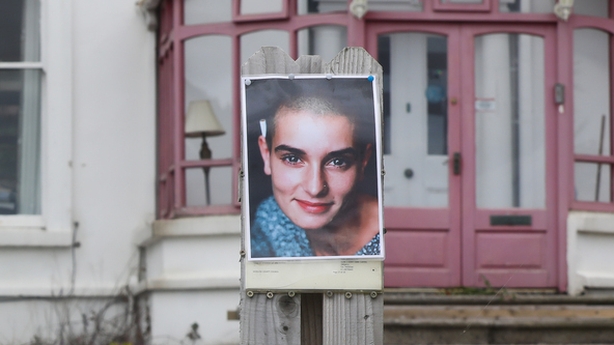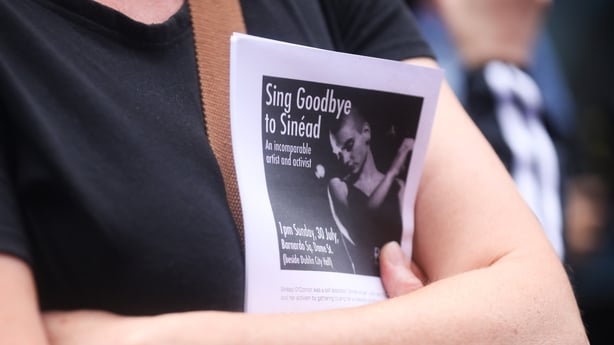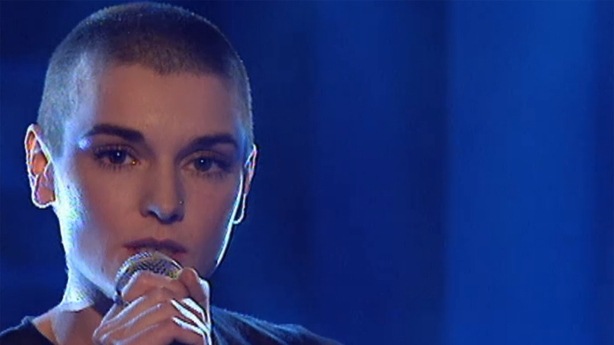Sinéad O'Connor was everything Official Ireland didn't want women to be, and we loved her for it. On the first anniversary of her death, we remember Ireland's most outspoken and original rock star
Of course, she'd probably hate it. The eulogies, the well-crafted, heartfelt tributes and the outpouring of national grief that have followed her tragic death.
From presidents to political leaders to fellow artists of all genres and, most importantly, to the plain people of Ireland, Sinéad O’Connor really meant something.
But all the fine words of recent days would have left her bemused. She’d most likely laugh, roll her bewitching eyes, and then emit a stream of words that would turn a navvy ashen faced.

For despite her flirtations with religions (and let’s face it, she was the original hot priest), Sinéad O’Connor never had any time for piety. Or sentimentalism. Her own accounts of her troubled life, from a childhood that reads like something from a gothic novel to her subsequent mental health issues, were often draped in dark humour and almost savage self-effacement.
Back in 2018, she remarked that she lived in mortal fear of Bono speaking at her funeral. "He’d shite on," she said. "’But oh, didn’t we love her, national treasure’ - bleh. Reasons for living, definitely best reason for living. Must stay alive longer than Bono."
But who can blame us for our sorrow? From a whisper to a scream, the waif-like beauty with the modulated south Dublin accent who had begun her career as "Bambi in bovver boots" had grown up in public and become stronger as she battled ghosts that all too many Irish people had tried to repress for years.

We felt for her and as her fourth album suggested, Sinéad had become somewhat of a universal mother, an agent for change, a rallying point for the disenfranchised, and with her early and brave attacks on the Catholic Church, a guiding light into Ireland’s shameful hidden history.
She was everything Official Ireland didn’t want women to be, and we loved her for it.
The walls in Ireland have come tumbling down in slow motion but let’s not make any extravagant claims on Sinéad's behalf - she didn’t make the Ryan and Murphy Reports into sexual abuse scandals in the Catholic Church or equal marriage and Repeal the 8th happen but she sure helped.
But hey, let’s go right ahead and make an extravagant claim on Sinéad's behalf - she’d laugh and tell you to get up the feckin’ yard, but Sinéad may even have been our modern-day Róisín Dubh - beautiful, contradictory, infuriating, troubled, defiant, and resilient.
Now that she’s gone and broken our hearts one last time, she has ascended to secular sainthood. However, she was no saint and that was one of the many things that made her so much fun, so vital, so very talented, and, in that immortal and very Irish expression, such a worry. She was a beacon, a crusader but also a hot mess. As Annie Lennox put it so eloquently in her tribute during the week, she was both a lioness and a lamb.

We will have read a lot over the past few days about her battle with depression and how she never came to terms with her hellish early years. She never seemed to find peace, but it is Sinéad's music that will endure.
As she said in Kathryn Ferguson’s excellent documentary, Nothing Compares, "I never wanted to be a singer. I just wanted to scream".
She also said she never wanted to be a pop star; she wanted to be a protest singer. It was another sign of her brilliance (something she seemed to be wholly unaware of) that she did all four - sing, scream, protest and become one of the most original pop stars ever.
Her fame and fate was sealed over thirty years ago with her heart stopping cover of Prince’s Nothing Compares 2 U and that single and very real tear coursing down her angelic face.
It’s an outstanding version for sure - and Sinéad sang many, many outstanding covers - but it is far from being the greatest song in her considerable body of work.
Her third single, the life-affirming guitar assault of Mandinka, frankly, blows Nothing Compares 2U out of the water. Her debut album, 1987’s still extraordinary The Lion and The Cobra, was an inferno of bloodletting and unflinching honesty, beautifully at odds with Ireland’s male rock band culture of the time. Troy, her song about her wretched girlhood, can still pin you the wall with its sheer promethean power.
But it was Sinéad's second album, I Do Not Want What I Haven’t Got in 1990, that turned the girl from Glenageary into a superstar. It starts with a prayer, and moves through skeletal Sean-nós hip hop, and defiant confessionals. It sold seven million copies and earned her a Grammy.
When global success came calling, she heard and refused to take part. Instead, she used her new platform and voice to make a change.
As Madonna, who had criticised her attacks on the Catholic Church, hawked her tiresome Sex book, Sinéad weaponised her fame and reignited the rebellious spirit of the Sixties and punk’s summer of hate in an era of bloated corporate rock.

When she took on the monolithic omertà of the Catholic Church, something far darker was stirring. In a moment which still electrifies to this day, on the night of 3 October 1992, she ripped up a picture of Pope John Paul II live on primetime US television and declared, "fight the real enemy!"
Naturally, she was branded a "she devil". Tabloid headlines screamed "Burn the witch" and "holy terror", she was assailed by death threats and radio boycotts.
After years of mental and physical abuse, Sinéad was like Joan of Arc being burnt over and over at the metaphorical stake, this time on a global scale. But as we know now with bitter hindsight, it was just like she said it would be.
These years of refusal had made risk-adverse record companies wary if not downright afraid of her. Still in her early twenties, she boldly challenged the gatekeepers of the music industry by boycotting the Grammys and the Brits, and then, at the height of the first Gulf War, she refused to let the American National Anthem be played before one of her gigs.

One music critic once described her as "the crazy lady in pop’s attic," a cretinous comment that provoked her ire but seemed to be the opinion of far too many hacks and industry insiders who just found Sinéad too hot-headed to handle.
Of course, she could be impossible. Some of her early assertions were gauche at best and dangerous at worst. After she launched one intemperate attack on U2, then as now, the crown princes of Irish rock, in the late eighties, the band responded by taking out a full-page ad in music magazine Hot Press that read, "Dear, Sinead - humbug."
It was certainly fun, and she certainly had balls.
It is important to remember how radical and brave Sinéad O'Connor's words and deeds really were all those years ago. And it is important to remember how badly she was treated. Much has been done to reclaim her from the wreckage of those early days as a whipping girl for the music industry and any notion that what the industry called "self-sabotage" was all a wily publicity stunt on her part.
She said she wrote her starkly honest (and what else could it be?) autobiography Rememberings because she wanted to be understood. "Along with that was my desire not to have the ignorant tell my story when I’m gone," she added. "Which was what would have happened had I not told it myself."
And like so many tragic deaths at a young age, there was so much of her story left to tell. In the weeks before last Wednesday’s terrible news, Sinéad had moved back to London, the cradle and crucible of her first dawning in the mid-eighties, and was completing a new studio album and planning a tour.
"Hopefully touring Australia and New Zealand toward end 2024. Europe, USA, and other territories beginning early 2025 : ) #TheBitchIsBack", she tweeted with characteristic mischief, much to the joy of those of us who has always kept the faith with her wayward talent.
That final album was apparently one track away from completion and it goes by the painfully poignant title of No Veteran Dies Alone. In the end, it isn’t a mystery how she stayed so prolific and creative despite her travails; she stayed so prolific and creative to spite her travails. Her troubles didn’t overshadow her creative life. They were her creative life.
So, how to say a final goodbye to one of the greatest talents in Irish music history? Sinéad's music often touched on our especially spiritual relationship with death, but I have a feeling she’d like a Rastafarian ceremony, with her ashes mixed in with the sacred herb and then scattered on Electric Avenue in Brixton.
Those homilies and tributes will keep rolling in but maybe Sinead herself would be most pleased with the simple and heartfelt words handwritten on a humble piece of cardboard at one of the many memorials to her startling brilliance that have popped up around the country - "Thank you, Sinead. We heard you."
Alan Corr @CorrAlan2


